On September 26, 2025, the Second National Academic Symposium on Astronomical Photonics was successfully convened at the Nanjing Institute of Astronomical Optics & Technology, Chinese Academy of Sciences.
Academicians Xiangqun Cui and Shengcai Shi, along with over 40 experts from renowned domestic universities and research institutions, gathered to discuss the latest advancements and future challenges in astronomical photonics.
The symposium was jointly hosted by the Nanjing Institute of Astronomical Optics & Technology, CAS, and the Astronomical Society of Jiangsu Province.
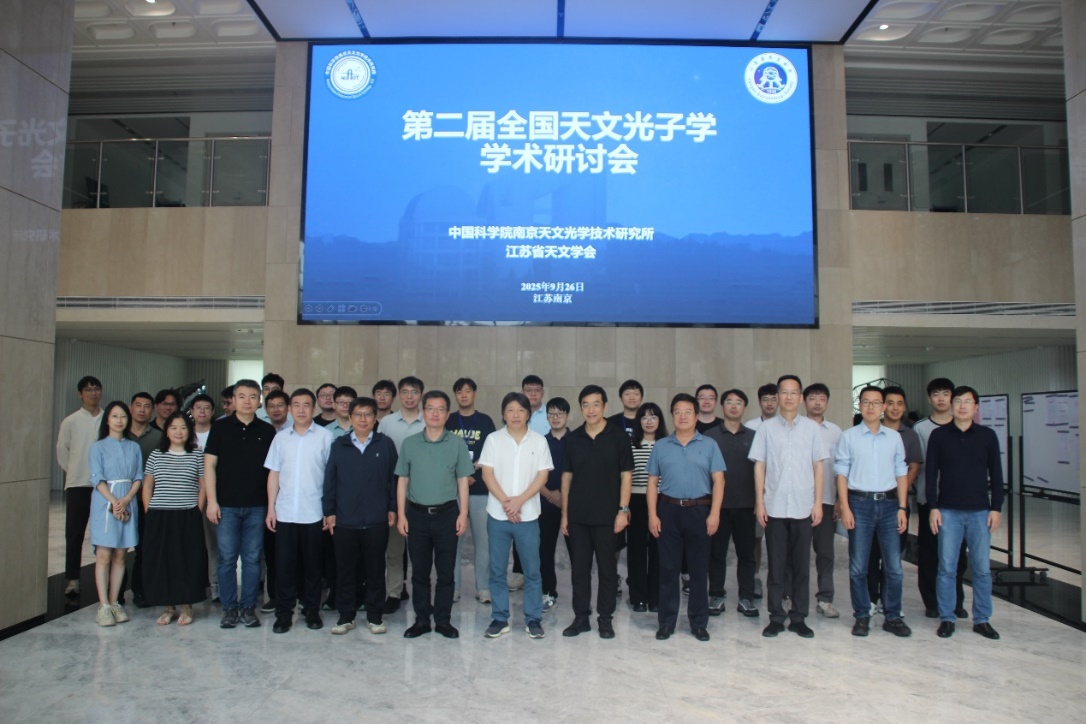
Group photo session
The opening ceremony was chaired by Researcher Hu Zhongwen, Deputy Director of Nanjing Institute of Astronomical Optics & Technology (NIAOT).
Researcher Gong Xuefei, Director of NIAOT, first provided a brief introduction to the institute and the symposium, then extended a warm welcome to all attendees.
Subsequently, Academician Shi Shengcai from Purple Mountain Observatory delivered a speech, emphasizing the significance of the integrated optoelectronic technologies, devices, and instruments discussed at the symposium for astronomical development, and proposed that this conference should be held regularly in the future.
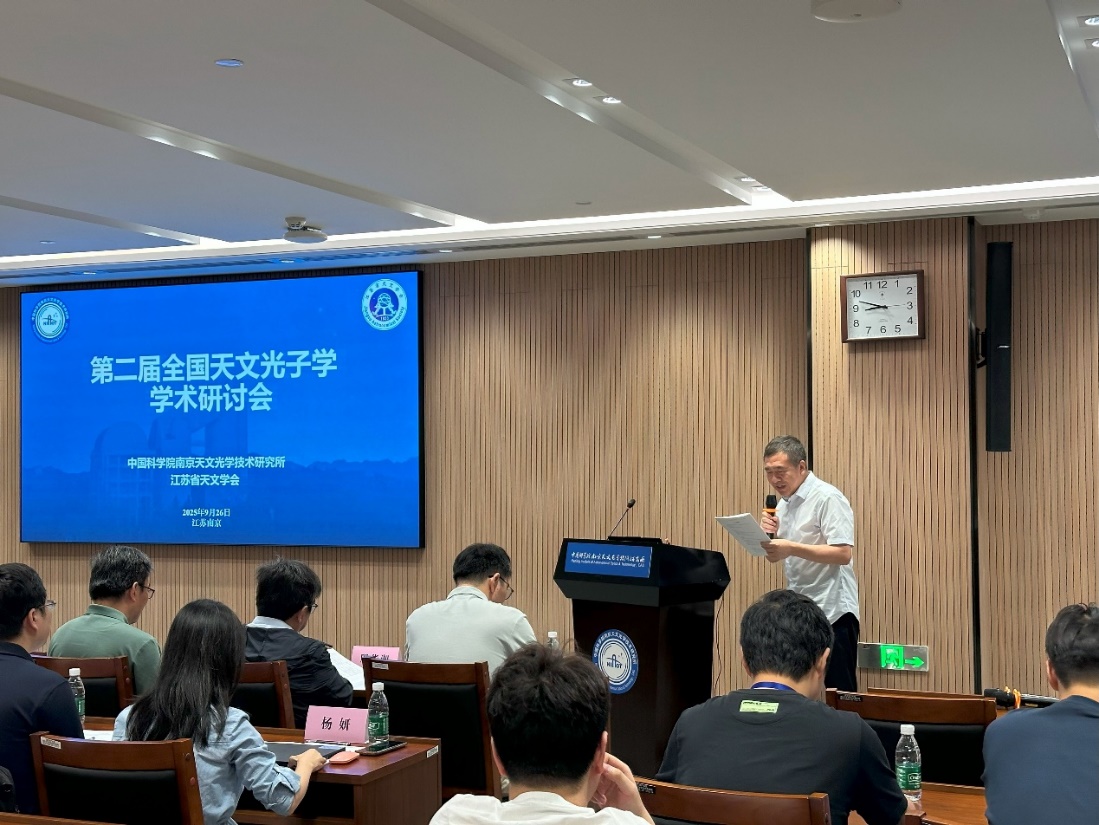
Deputy Director Hu Zhongwen chaired the meeting
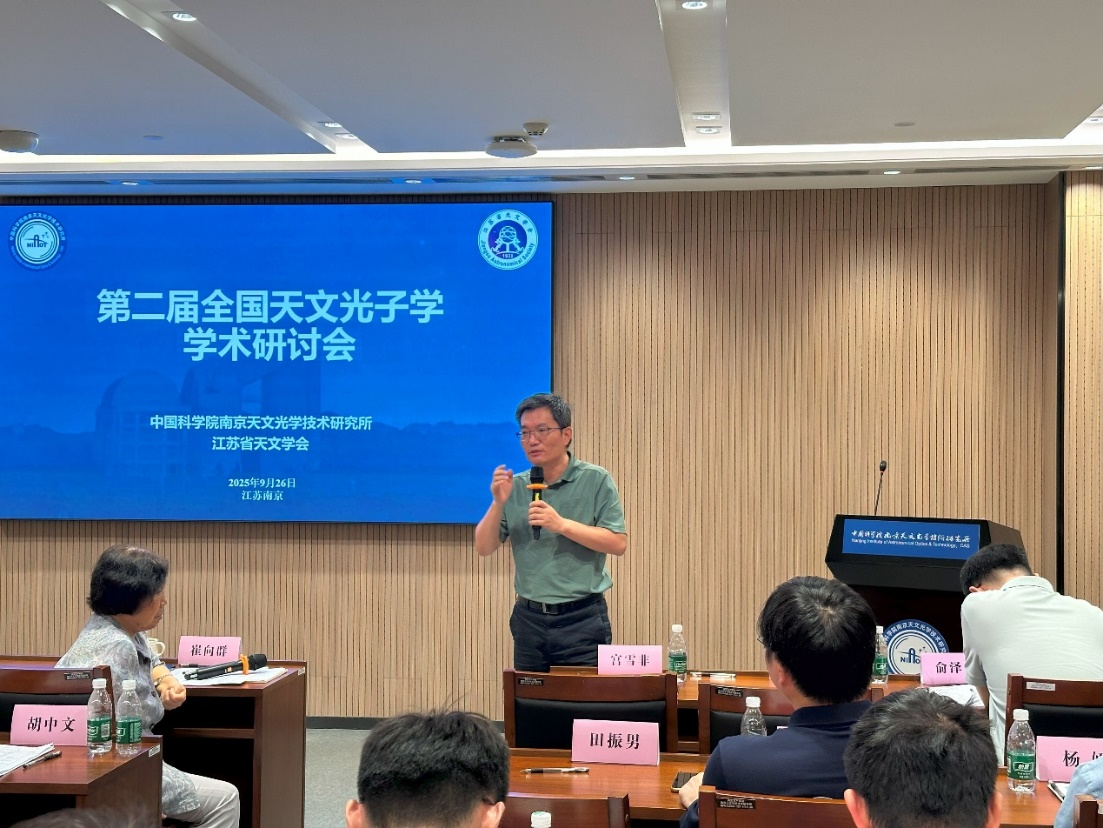
Director Gong Xuefei delivered the opening address
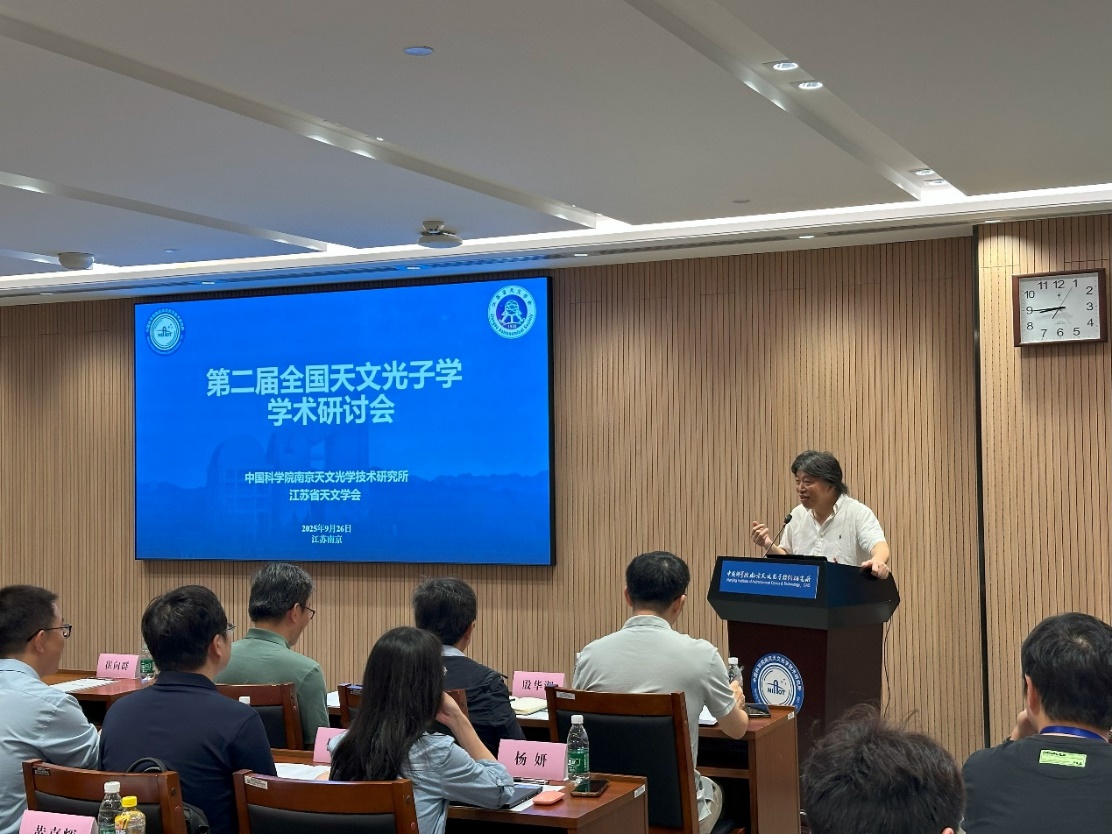
Academician Shi Shengcai delivered a speech
The conference featured 15 high-level academic presentations covering astronomical sciences, technical processes, and research advances in astronomical photonics as follows:
1): Significant Progress in Large-Scale Spectroscopic Sky Survey Science (Yan Hongliang, National Astronomical Observatories of CAS)
2): Extremely Large Spectroscopic Survey Telescope (Bai Hua, Nanjing Institute of Astronomical Optics & Technology, CAS)
3): On-Chip Integrated Spectrometer (Dai Daoxin, China Jiliang University)
4): Integrated Photonic Devices Using Conformal Transformation Methods (Liu Hui, Nanjing University)
5): Silicon-Based Liquid Crystal Spatial Light Modulation Technology (Xia Jun, Southeast University)
6): Silicon-Based Optoelectronic Integrated Chips and Fabrication Technologies (Yang Yan, Institute of Microelectronics of CAS)
7): Silicon Photonic Integrated Chips with On-Chip Filtering Applications (Xue Jintao, Xi'an Institute of Optics and Precision Mechanics, CAS)
8): Silicon Nitride-Silicon Heterogeneous Integrated Photonic Chips and Applications (Feng Jijun, University of Shanghai for Science and Technology)
9): Considerations on Spectral Processing via Fiber Image Speckle Analysis (Sun Weimin, Harbin Engineering University)
10): Integration and Application of On-Chip Light Source Devices (Li Jinghui, Hangzhou Institute for Advanced Study, UCAS)
11): Fiber and Optical Waveguide-Based Spectrometers" (Ke Shijie, Westlake University)
12): Ultra-Compact Waveguide Dichroic Lens Spectrometer (Dang Zhangqi, Shanghai Astronomical Observatory of CAS)
13): Femtosecond Laser Direct-Writing of 3D Optical Waveguides and On-Chip Photonic State Control (Tian Zhennan, Jilin University)
14): Lithium Niobate Thin-Film Photonic Integrated Chips and Their Applications (Zhang Haisu, East China Normal University)
15): Challenges and Issues in Astronomical Spectroscopy Chips (He Jinping, Nanjing Institute of Astronomical Optics & Technology, CAS)
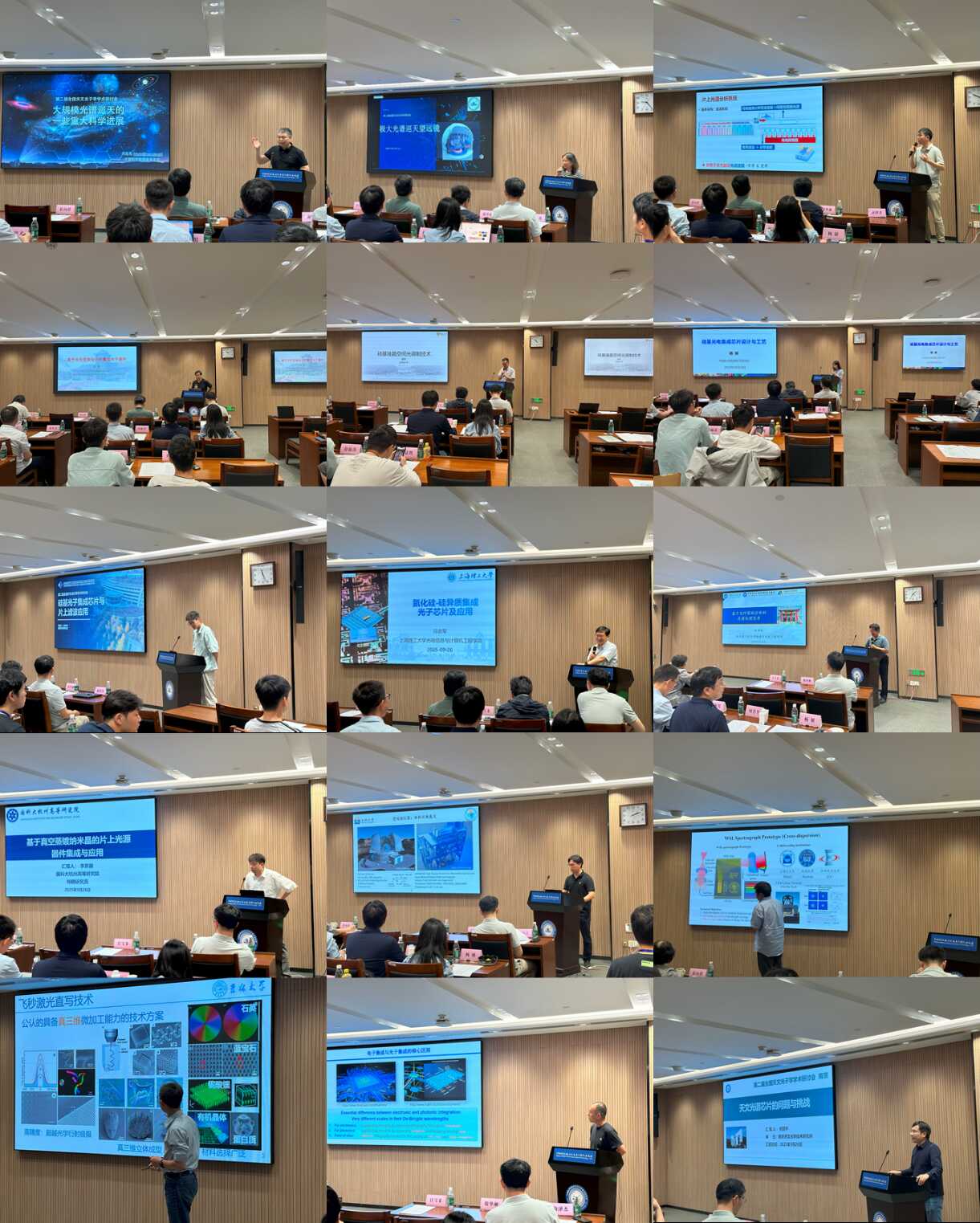
Presentations by Distinguished Experts
Academician Cui Xiangqun chaired the concluding panel discussion. Experts engaged in in-depth discussions on the challenges and issues of astronomical spectroscopy chips and proposed multiple constructive suggestions for the future development of astronomical photonics in China.
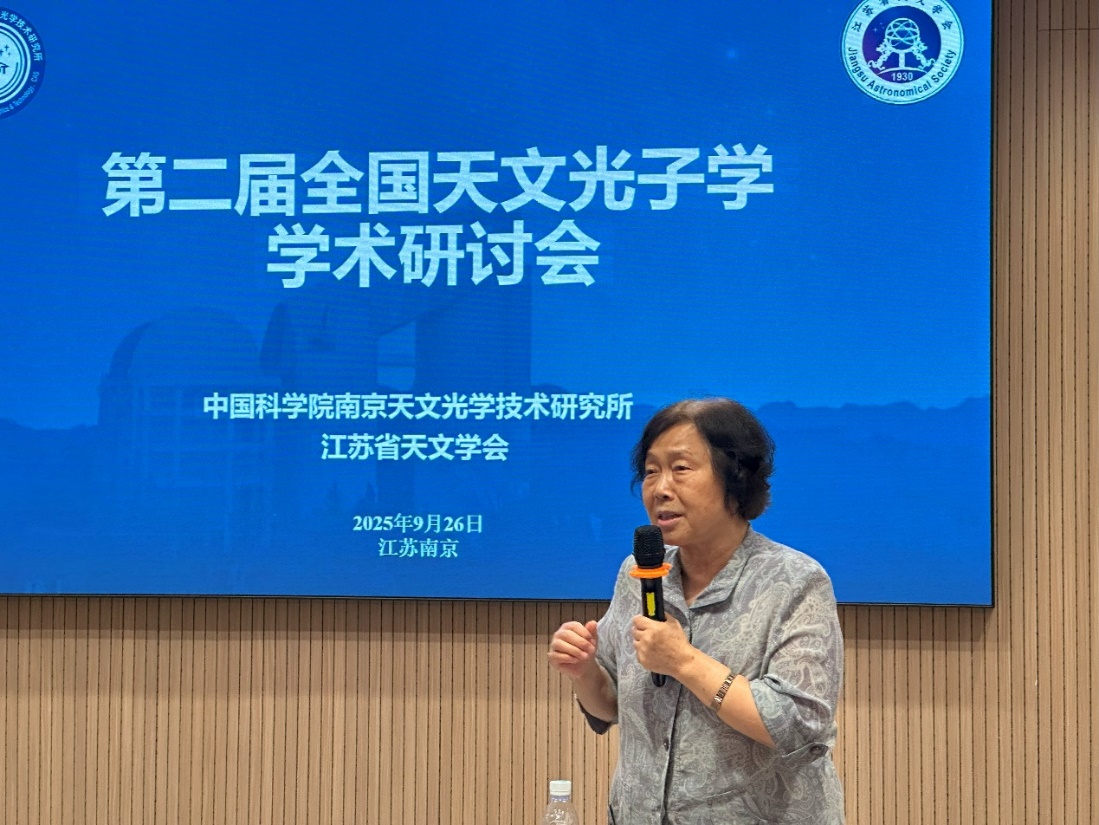
Academician Cui Xiangqun delivered a speech
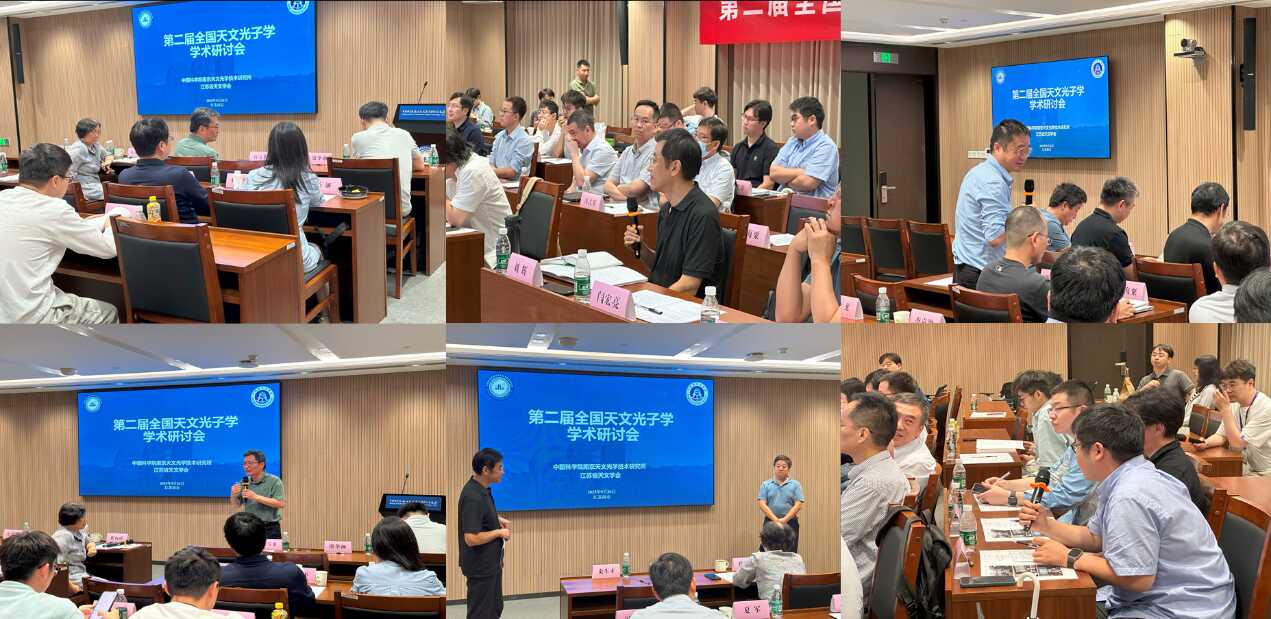
The Open Discussion Session
During the conference intermission, Senior Researchers He Jinping and Bai Hua guided attending experts on a tour of NIAOT's Astronomical Photonics Laboratory, showcasing models of LAMOST and large optical-infrared telescopes, along with the high-precision astronomical mirror fabrication facility.
This conference has established a high-level interdisciplinary platform integrating astronomy and photonics, facilitating deeper convergence of astronomical science and technology, which holds particular significance for advancing China's astronomical photonics field, especially in astronomical spectroscopy chips.